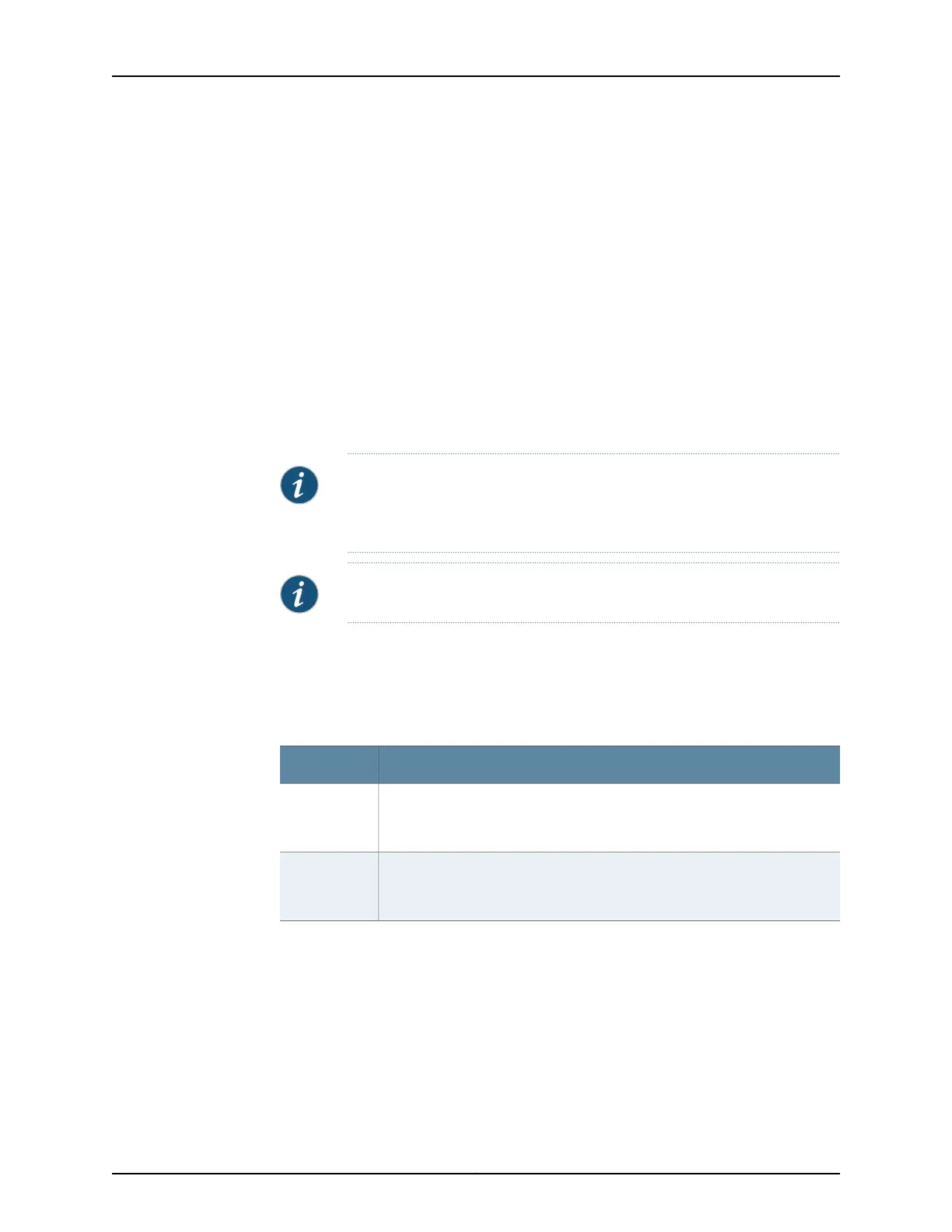To clear dynamically learned MAC addresses globally across all devices participating in
the routing instance, you can include the statement at the following hierarchy levels:
•
[edit logical-systems logical-system-name routing-instances routing-instance-name
protocols vpls]
•
[edit routing-instances routing-instance-name protocols vpls]
To clear the MAC addresses on the routers in a specific mesh group, you can include the
statement at the following hierarchy levels:
•
[edit logical-systems logical-system-name routing-instances routing-instance-name
protocols vpls mesh-group mesh-group-name]
•
[edit routing-instances routing-instance-name protocols vpls
mesh-group mesh-group-name]
NOTE: On ACX Series routers, the mesh-group statement is supported only
on ACX5000 line of routers. ACX5000 line of routers can support up to 8
user-defined mesh groups per VPLS routing instance.
NOTE: ACX Series routers do not support the [edit logical-systems] hierarchy.
For certain cases where MAC flush processing is not initiated by default, you can also
specify explicit-mac-flush-message-options to additionally configure the router to send
explicit MAC flush messages under specific conditions. For a list of the explicit MAC flush
message options you can include with this statement, see the summary section for this
statement.
Release History Table DescriptionRelease
Starting in Junos OS Release 16.1, you can specify one or more nondefault routing
instances where you want MPLS routes to be leaked from the mpls.0 path
routing table in the master routing instance.
16.1
Starting in Junos OS Release 12.3R4, if you do not configure the parameter to
limit the number of MAC addresses to be learned by a VPLS instance, the default
value is not effective.
12.3R4
Related
Documentation
Configuring Improved VPLS MAC Address Learning on T4000 Routers with Type 5 FPCs•
• enhanced-mode
• show ldp database
Copyright © 2017, Juniper Networks, Inc.1254
ACX Series Universal Access Router Configuration Guide

